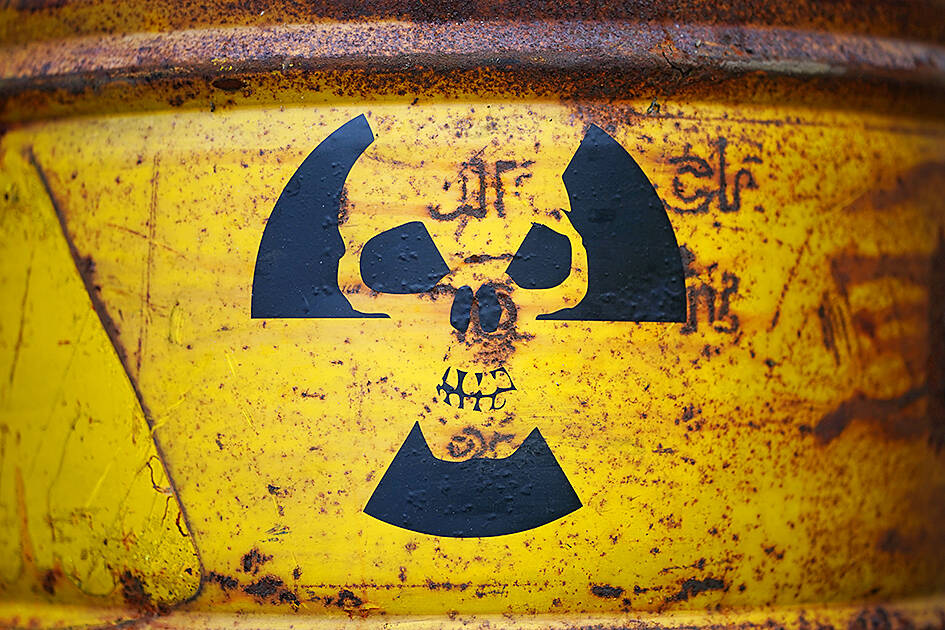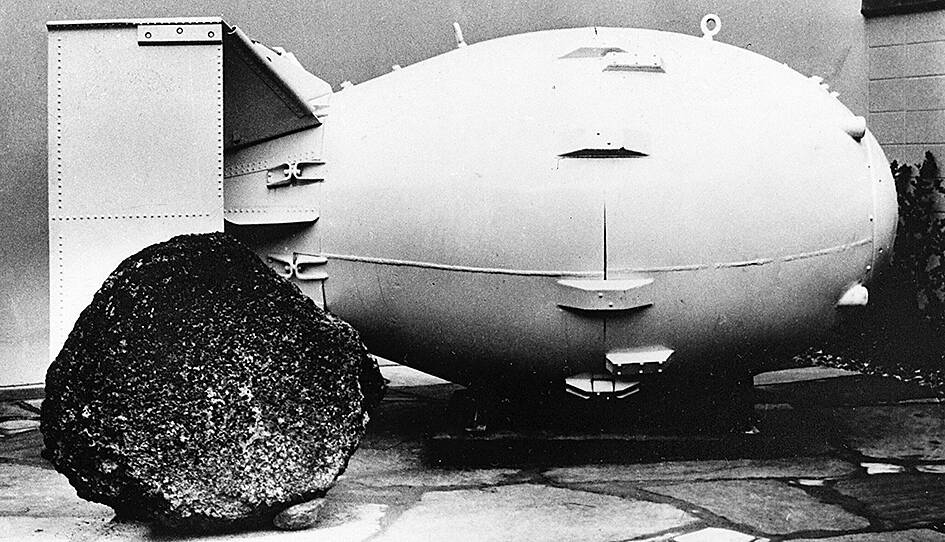For thousands of years, predictions of apocalypse have come and gone. But with dangers rising from nuclear war and climate change, does the planet need to at least begin contemplating the worst?
When the world rang in 2022, few would have expected the year to feature the US president speaking of the risk of doomsday, following Russia’s threats to go nuclear in its invasion of Ukraine.
“We have not faced the prospect of Armageddon since Kennedy and the Cuban missile crisis” in 1962, Joe Biden said in October.

Photo: EPA-EFE
And on the year that humanity welcomed its eighth billion member, UN Secretary-General Antonio Guterres warned that the planet was on a “highway to climate hell.”
In extremes widely attributed to climate change, floods submerged one-third of Pakistan, China sweat under an unprecedented 70-day heatwave, and crops failed in the Horn of Africa — all while the world lagged behind on the UN-blessed goal of checking warming at 1.5 degrees Celsius above pre-industrial levels.
BIGGEST RISK YET OF NUCLEAR WAR?

Photo: AP
The Global Challenges Foundation, a Swedish group that assesses catastrophic risks, warned in an annual report that the threat of nuclear weapons use was the greatest since 1945 when the US destroyed Hiroshima and Nagasaki in history’s only atomic attacks.
The report warned that an all-out exchange of nuclear weapons, besides causing an enormous loss of life, would trigger clouds of dust that would obscure the sun, reducing the capacity to grow food and ushering in “a period of chaos and violence, during which most of the surviving world population would die from hunger.”
Kennette Benedict, a lecturer at the University of Chicago who led the report’s nuclear section, said risks were even greater than during the Cuban Missile Crisis as Russian President Vladimir Putin appeared less restrained by advisers.
While any Russian nuclear strike would likely involve small “tactical” weapons, experts fear a quick escalation if the US responds.
“Then we’re in a completely different ballgame,” said Benedict, a senior adviser to the Bulletin of the Atomic Scientists, which in January will unveil its latest assessment of the “doomsday clock” set since last year at 100 seconds to midnight.
Amid the focus on Ukraine, US intelligence believes North Korea is ready for a seventh nuclear test, Biden has effectively declared dead a deal on Iran’s contested nuclear work and tensions between India and Pakistan have remained at a low boil.
Benedict also faulted the Biden administration’s nuclear posture review which reserved the right for the US to use nuclear weapons in “extreme circumstances.”
“I think there’s been a kind of steady erosion of the ability to manage nuclear weapons,” she said.
CHARTING WORST-CASE CLIMATE RISKS
UN experts estimated ahead of talks in Egypt last month that the world was on track to warming of 2.1 to 2.9 degrees Celsius — but some outside analysts put the figure well higher, with greenhouse gas emissions in 2021 again hitting a record despite pushes to renewable energy.
Luke Kemp, a Cambridge University expert on existential risks, said the possibility of higher warming was drawing insufficient attention, which he blamed on the consensus culture of the UN’s Intergovernmental Panel on Climate Change and scientists’ fears of being branded alarmist.
“There has been a strong incentive to err on the side of least drama,” he said.
“What we really need are more complex assessments of how risks would cascade around the world.”
Climate change could cause ripple effects on food, with multiple breadbasket regions failing, fueling hunger and eventually political unrest and conflict.
Kemp warned against extrapolating from a single year or event. But a research paper he co-authored noted that even a two-degree temperature rise would put the Earth in territory uncharted since the Ice Age.
Using a medium-high scenario on emissions and population growth, it found that two billion people by 2070 could live in areas with a mean temperature of 29 degrees Celsius, straining water resources — including between India and Pakistan.
CASE FOR OPTIMISM
The year, however, was not all grim. While China ended the year with a surge of COVID-19 deaths, vaccinations helped much of the world turn the page on virus, which the WHO estimated in May contributed to the deaths of 14.9 million people in 2020 and last year.
Surprising jaded observers, a conference this month in Montreal on biodiversity produced a major deal to protect 30 percent of the world’s land and seas, with China leading the way.
The world has seen previous warnings of worst-case scenarios, from Thomas Malthus predicting in the 18th century that food production would not keep up with population growth to the 1968 US bestseller The Population Bomb.
One of the most prominent current-day critics of pessimism is Harvard professor Steven Pinker, who has argued that violence has declined massively in the modern era.
Speaking after the Ukraine invasion, Pinker acknowledged Putin had brought back interstate war. But he said a failed invasion could also reinforce the positive trends.
Biden, in a Christmas address to Americans, acknowledged tough times but pointed to the decline in COVID and healthy employment rates.
“We’re surely making progress. Things are getting better,” Biden said.

May 11 to May 18 The original Taichung Railway Station was long thought to have been completely razed. Opening on May 15, 1905, the one-story wooden structure soon outgrew its purpose and was replaced in 1917 by a grandiose, Western-style station. During construction on the third-generation station in 2017, workers discovered the service pit for the original station’s locomotive depot. A year later, a small wooden building on site was determined by historians to be the first stationmaster’s office, built around 1908. With these findings, the Taichung Railway Station Cultural Park now boasts that it has

The latest Formosa poll released at the end of last month shows confidence in President William Lai (賴清德) plunged 8.1 percent, while satisfaction with the Lai administration fared worse with a drop of 8.5 percent. Those lacking confidence in Lai jumped by 6 percent and dissatisfaction in his administration spiked up 6.7 percent. Confidence in Lai is still strong at 48.6 percent, compared to 43 percent lacking confidence — but this is his worst result overall since he took office. For the first time, dissatisfaction with his administration surpassed satisfaction, 47.3 to 47.1 percent. Though statistically a tie, for most

In February of this year the Taipei Times reported on the visit of Lienchiang County Commissioner Wang Chung-ming (王忠銘) of the Chinese Nationalist Party (KMT) and a delegation to a lantern festival in Fuzhou’s Mawei District in Fujian Province. “Today, Mawei and Matsu jointly marked the lantern festival,” Wang was quoted as saying, adding that both sides “being of one people,” is a cause for joy. Wang was passing around a common claim of officials of the People’s Republic of China (PRC) and the PRC’s allies and supporters in Taiwan — KMT and the Taiwan People’s Party — and elsewhere: Taiwan and

Six weeks before I embarked on a research mission in Kyoto, I was sitting alone at a bar counter in Melbourne. Next to me, a woman was bragging loudly to a friend: She, too, was heading to Kyoto, I quickly discerned. Except her trip was in four months. And she’d just pulled an all-nighter booking restaurant reservations. As I snooped on the conversation, I broke out in a sweat, panicking because I’d yet to secure a single table. Then I remembered: Eating well in Japan is absolutely not something to lose sleep over. It’s true that the best-known institutions book up faster